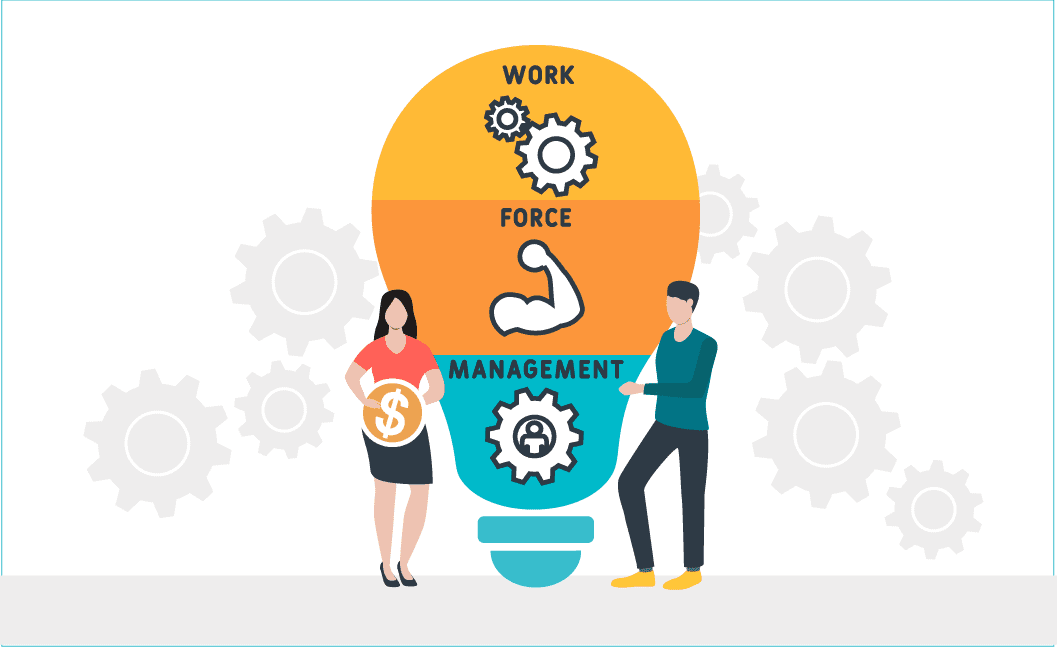What if you were running a marathon (already arguably miserable), but then you find out you don’t have a route map, you have no idea where the water stations are, and you don’t know how far you’ve come or how far you have left? Talk about torture!
That would be a horrible experience, but it also sounds chaotic and unmanageable.
Running a call center can feel a lot like running a marathon. It’s fast-paced, long, and mentally, physically, and emotionally exhausting.
With workforce management (WFM) tools, getting through the marathon that is your day is a breeze. WFM gives you the direction, order, and insight to set a clear roadmap and cross the finish line in record time. Let’s explore what WFM is, how it works, and why it is an indispensable tool for your call center management.
The Role of WFM Tools in Your Call Center
The average call center handles 4,400 calls every month with 48 missed calls. With that kind of call volume, manually managing your call center team is pretty overwhelming. And staying efficient is nearly impossible.
Enter WFM tools. With WFM technology, driving efficient call center operations becomes easy. These tools provide a structured approach to managing schedules. They help you forecast call volumes, track performance, and ensure the right number of agents are in the right place at the right time.
But before we break down the components of WFM, we need to understand the basics.
What Is WFM?
Picture this: it’s the holiday season in your call center. Some days, your phones are ringing off the hook. The next day, no one calls, leaving you with too many agents just sitting around all day. Without WFM tools to help you, agents are either scrambling to keep up or bored to tears. And you’re frantically trying to balance schedules to meet unpredictable call volume fluctuations. This scenario highlights the need for effective workforce management.
In a call center, WFM is a set of processes and tools designed to optimize the productivity of the workforce. By accounting for current and future call volumes, WFM helps you schedule your team to match these volumes. WFM involves forecasting call volumes, scheduling agents, tracking performance, and analyzing data to improve efficiency and service quality. The result? Your call center meets (and exceeds) customer expectations.
No matter your call volume or seasonal peak, you can ensure you have the right people at the right time to provide every customer with personalized interactions and high-quality service.
What Does WFM Do?
Essentially, WFM helps call centers predict and prepare for the future.
WFM tools collect and analyze historical data and performance metrics to forecast call volumes and customer demands. With this information, managers can schedule the right number of agents with the best skills to handle the expected workload. Not only does this support agent efficiency, but it also enhances the customer and agent experience. Plus, customers get help from the best agents available, right when they need it. And that reduces wait times and improves first call resolution. And your agent satisfaction gets a boost because agents can successfully handle their workload, reducing the likelihood of burnout.
Besides forecasting and scheduling, many WFM tools also look at what’s happening in the moment. They monitor your call center throughout the day, suggesting schedule adjustments or routing strategies. They track agent performance and analyze customer interactions to maintain service quality. And they identify trends and areas of improvement with a comprehensive view of your operations from top to bottom.
Learn more about unlocking the power of WFM for your ops in this blog post.
How WFM Tools Streamline Your Call Center Management
WFM tools help streamline call center management. Here are some key ways they make your life easier.
- Improve operational efficiency. WFM ensures your call center operates at peak efficiency. By accurately forecasting call volumes and scheduling the right number of agents, you reduce idle time and prevent overstaffing, ensuring more customers get helped in a day.
- Boost service quality. Time is of the essence in a call center. As many as 92% of respondents in a recent survey noted that agents should respond quickly to questions and problems. WFM helps you meet this expectation. With the right number of agents available to handle calls, customer wait times are minimized, and customers receive more effective help. This leads to better service, higher customer satisfaction, and more loyalty.
- Increase agent engagement. Call center turnover is a plague. One report revealed that 47% of call center employees plan to leave their current role within a year and a half. How do you keep agents engaged and avoid that level of attrition? With WFM, you can prevent burnout and increase job satisfaction by creating balanced schedules. This gives your agents room to breathe and socialize in their day. You’ll find that happy agents are more engaged and motivated to provide excellent service.
- Reduce staffing costs. Your leadership team wants to see that your customers are happy and that the company isn’t losing money. WFM tools help reduce excess costs in your call center. By optimizing schedules and reducing the need for overtime, WFM helps manage labor costs, contributing to a healthier bottom line.
3 WFM Platforms You Should Consider
When choosing the right WFM platform, it’s essential to consider options that offer robust features and seamless integrations. Here are three platforms worth considering.
- Verint. Verint’s WFM solution focuses on how your workforce management impacts the customer experience. The Verint platform provides advanced forecasting and scheduling capabilities, real-time insights, and seamless integrations with other call center systems. With Verint, you can ensure smooth operations, better efficiency, and improved CX.
- NICE. NICE is on the front lines of innovation with WFM. They offer standard features, like AI-driven forecasting, automated scheduling, and real-time performance tracking. They help managers keep employees engaged, hit KPIs, and support their workforce.
- Playvox. Our WFM partner, Playvox uses advanced AI features for agent scheduling, forecasting, and performance management. Known for its comprehensive suite of tools, Playvox offers real-time and historic performance management, quality assurance, and workforce optimization so you can keep up with customer expectations and support your employees. Its user-friendly interface and powerful analytics make it a top choice for call centers looking to enhance their WFM capabilities.
Chat with our team to see how we can help streamline your call center management.
Adding WFM With Broadvoice + Playvox
We’ve partnered with Playvox to add WFM into our CCaaS platform to help you reduce your staffing costs and improve your service levels. With it, you can use AI to forecast and schedule agents, automate staffing adjustments, and align your long-term workforce planning with business growth through capacity planning. You can also track adherence and occupancy, agent performance and see real-time analytics to know your service levels and workforce performance.
The seamless integration puts your CCaaS and WFM onto a single platform with one bill and one support team to help you throughout the life of your contract.












